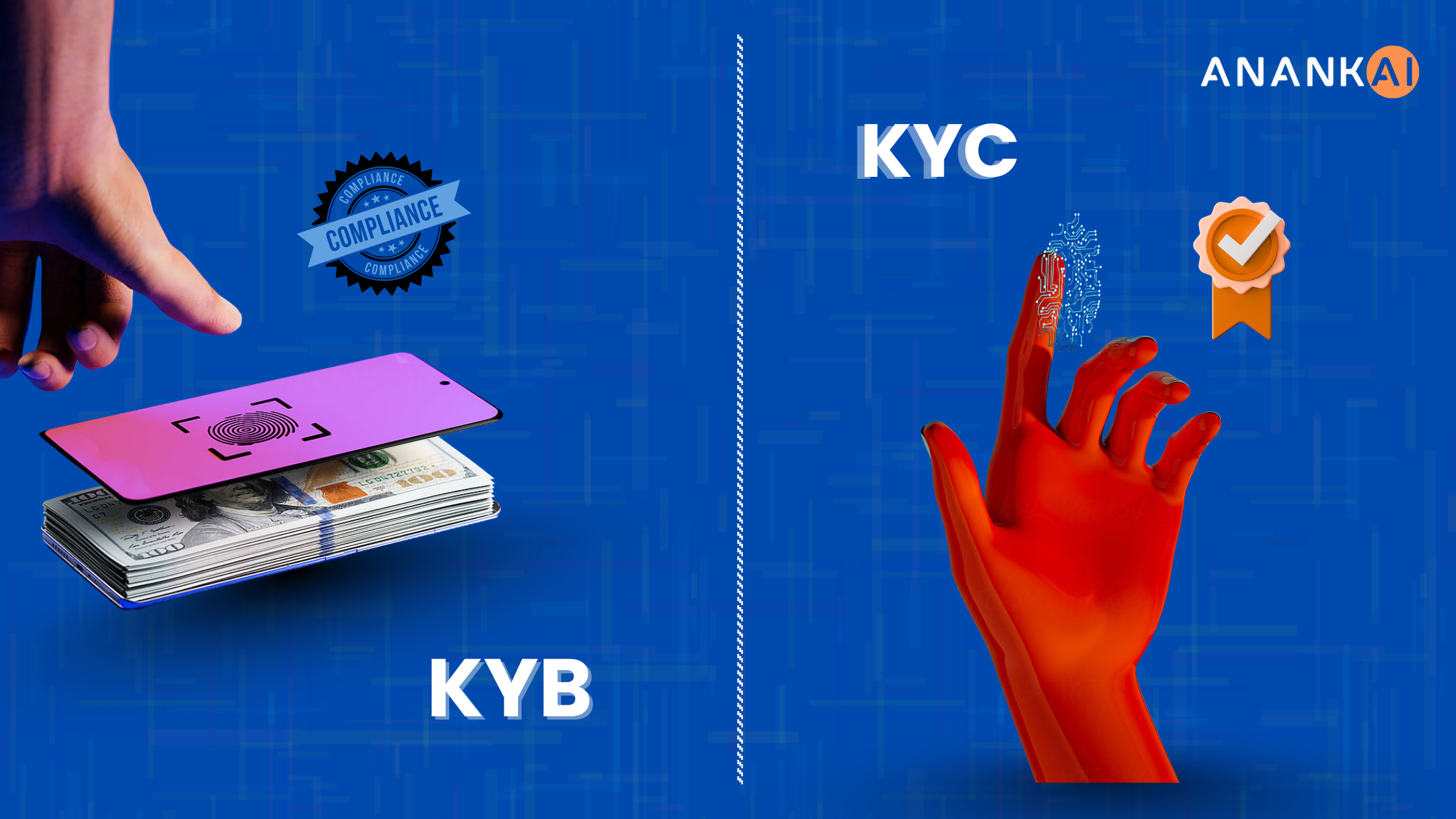
In FinTech, KYC (Know Your Customer) and KYB (Know Your Business) are more than just compliance terms. They define how you onboard people and companies, manage risk, and remain aligned with regulatory expectations.
Whether you are onboarding retail customers or business clients, the verification process determines how quickly you can scale, how secure your platform is, and how regulators perceive you.
This blog explains when to apply KYC versus KYB, the checks required, and global compliance considerations.
What is KYC?
KYC is about verifying individuals who use your platform. At its core, it involves collecting and validating identity information such as government-issued IDs, addresses, and biometrics, then cross-checking these against regulatory databases.
Modern KYC goes further and typically includes:
- Customer Identification Programme (CIP): Capturing essential attributes such as name, date of birth, and ID number.
- Sanctions & Watchlist Screening: Checking against AML (Anti-Money Laundering), PEP (Politically Exposed Person), and terrorism lists.
- Risk Assessment: Running customer profiles through rule engines and scoring models.
- Enhanced Due Diligence (EDD): Triggered when users originate from high-risk geographies or industries, or demonstrate unusual behavioural patterns.
Delivering KYC requires collaboration across teams:
- Product & Engineering design seamless onboarding flows.
- Compliance defines rules and thresholds.
- Operations manage manual reviews when anomalies are flagged.
What is KYB?
KYB extends the same principles to businesses, but with greater complexity. When onboarding a corporate client, verifying only the registration number is insufficient. Regulators require visibility into ownership and control, which involves:
- Business Verification: Extracting incorporation documents from registries such as Companies House (UK) or MCA (India).
- Beneficial Ownership Checks: Identifying shareholders, directors, and ultimate beneficial owners (UBOs).
- Licensing & Regulatory Validation: Confirming the business is licensed to operate in its sector.
- Adverse Media & Risk Profiling: Screening for litigation, sanctions, or negative press.
- Continuous Monitoring: Tracking changes in ownership or shifts in risk exposure.
KYB demands close coordination between legal, compliance, risk, and technology teams, with registry APIs, global watchlists, and ownership resolution tools working seamlessly together.
When to Use KYC vs KYB
| Feature | KYC | KYB |
| Purpose | Verify individuals | Verify businesses |
| Applies To | Customers / clients | Companies / entities |
| Checks | ID, address, biometric data | Registration, ownership, tax ID |
| When Used | Bank accounts, digital apps | Vendor onboarding, corporate accounts |
| Requirement | Banks, FinTechs, FIs | B2B, corporate clients |
| Goal | Prevent fraud & money laundering | Ensure legitimate business partners |
In mixed ecosystems, both apply. For example, a payments FinTech serving SMEs must run KYB on the business and KYC on its UBOs.
How Regulations Shape Your Approach
Regulatory obligations vary across regions:
- United States: FinCEN’s CDD rule mandates disclosure of beneficial owners for corporate accounts, plus ongoing monitoring for suspicious activity.
- India: The RBI has introduced flexibility through Video KYC (V-CIP), while a unified KYC framework is being developed for banks, NBFCs, and FinTechs.
- European Union: AML directives (5AMLD, 6AMLD) enforce strict KYB checks, especially for cross-border entities.
- Singapore & UAE: Regulators focus heavily on UBO transparency and real-time sanctions screening.
Global expansion requires modular KYC/KYB engines capable of toggling between rulesets, integrating multiple registries, and applying local thresholds without disrupting the customer experience.
Use Cases
- Digital Bank onboarding individuals → KYC as the primary requirement.
- SME Lending Platform → KYB for the business + KYC for directors/UBOs.
- Crypto Exchange → Dual processes: KYC for retail traders, KYB for institutions.
- B2B Payments FinTech → KYB to validate vendors before enabling transactions.
Designing the Process for Scale
The challenge is not only understanding KYC and KYB but also implementing them without slowing growth.
This is where AnankAI comes in:
- Real-time document capture, liveness checks, and registry API pulls.
- Automated risk scoring and rule-based decisioning.
- Escalation of edge cases to compliance teams with full audit trails.
- Geo-specific configurations (e.g., US BOI filings, India’s V-CIP).
- Continuous monitoring of ownership changes, anomalies, and sanctions updates.
This is not just about onboarding, it is about maintaining trust across every customer and business relationship.
To learn more, reach us at info@anankai.com.
Conclusion
FinTechs do not simply need KYC or KYB; they need a trust infrastructure that scales with both regulation and growth.
- For individuals, KYC provides a secure entry point.
- For businesses, KYB uncovers ownership networks regulators focus on.
The real opportunity lies in designing systems that are modular, intelligent, and globally compliant. When implemented correctly, compliance becomes more than a regulatory necessity – it becomes a growth enabler.
